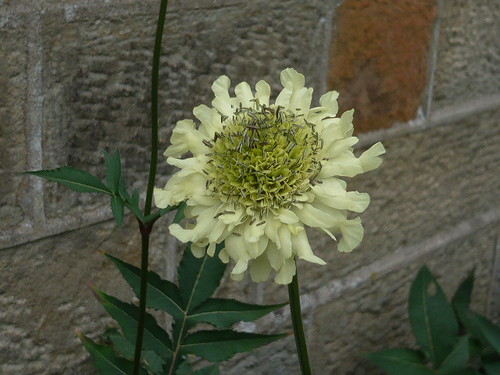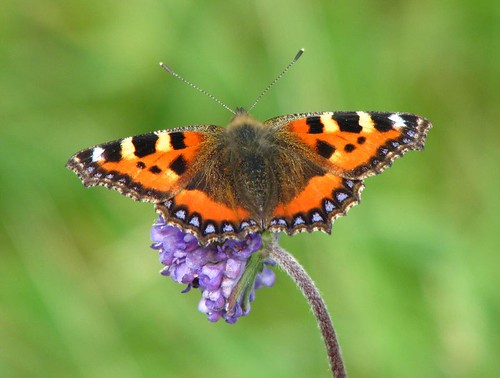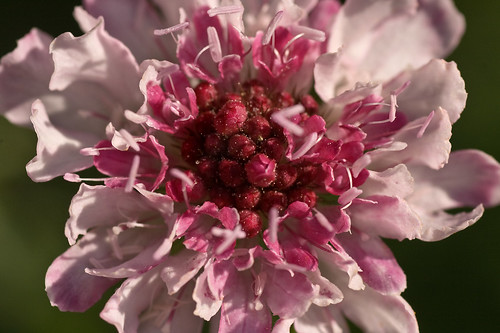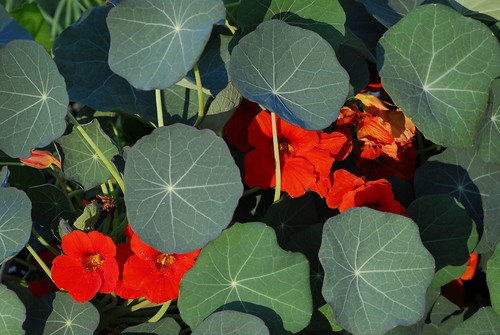Growing Scabious – Scabiosa
Scabious is a UK native perennial plant that is available in many forms and species for growing in your garden. Grown in damp areas it is popular with insects bees, moths and butterflies. Known for powdery blue pincushions of flower on the top of long stems makes this plant is a useful cut flower.
Description, Cultivation and Growing Tips
Scabious is a hardy perennial well loved for cottage gardens.
Scabious grows well on dry, sandy soil in a sunny position or partially shaded location.
You can acquire or just admire plants as part of a collection
Common Names and Varieties to Consider
- Scabiosa is generally known as Scabious or the Pincushion Flower.
- Our UK native Scabiosa columbaria is compact with wiry stems topped with tiny Cambridge-blue pincushion flowers
- Scabiosa caucasica is the Caucasian Scabious first grown in the UK 200 years ago. Generally pale blue there is a white form called Miss Willmot.
- Scabious atropurpurea is available in pink (Beaujolais Bonnets) and purple (Ace of Spades).
- A new compact Scabious is now on the market with a height of 20″ and a spread of 16″ enough to use as ground cover.
- Scabiosa ochroleuca or the Yellow scabious has cream pincushions
- Varieties for growing Scabiosa; Clive Greaves (light Blue), Miss Wilmott (white), and Pink Diamond
Unusual Facts about Scabious
- Scabious is a member of the Teasel family Dipsacaceae
- Scabiosa species are also used as food plants by the larvae of some butterflies.
- Devil’s-bit scabious and field scabious are UK natives but what the Devil?.
- Giant Scabious isn’t really Scabious it is Cephalaria gigantea which has primrose yellow flowers on a 6′ stem.
Old & Odd Tips From Gardeners Tips
- A top dressing of grit before winter will help surface drainage as Scabious dislike cold, wet poorly drained soil conditions.
- Deadheading will prolong flowering and if you trim flowers down to the next bud you should get two new flowers from the axil bud.
- As a black flower Scabious Ace of Spades has fragrant blooms that attract bees and butterflies whilst making impressive cut flowers.
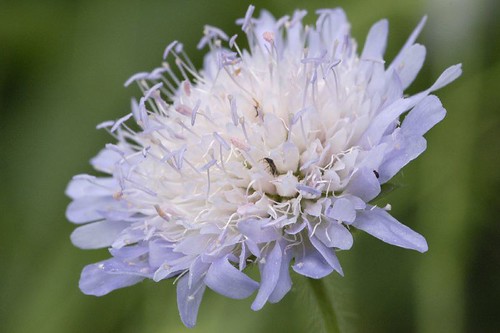
Credits
Scabious sp. 2 by the justified sinner CC BY-NC-SA 2.0
Small Tortoiseshell ‘It was feeding on Scabious at Ubley Warren near Cheddar’ by Annies Pics CC BY-NC 2.0
Scabious by Mike Legend CC BY-NC-ND 2.0
devil’s bit scabious by Facing North East CC BY-NC-SA 2.0
